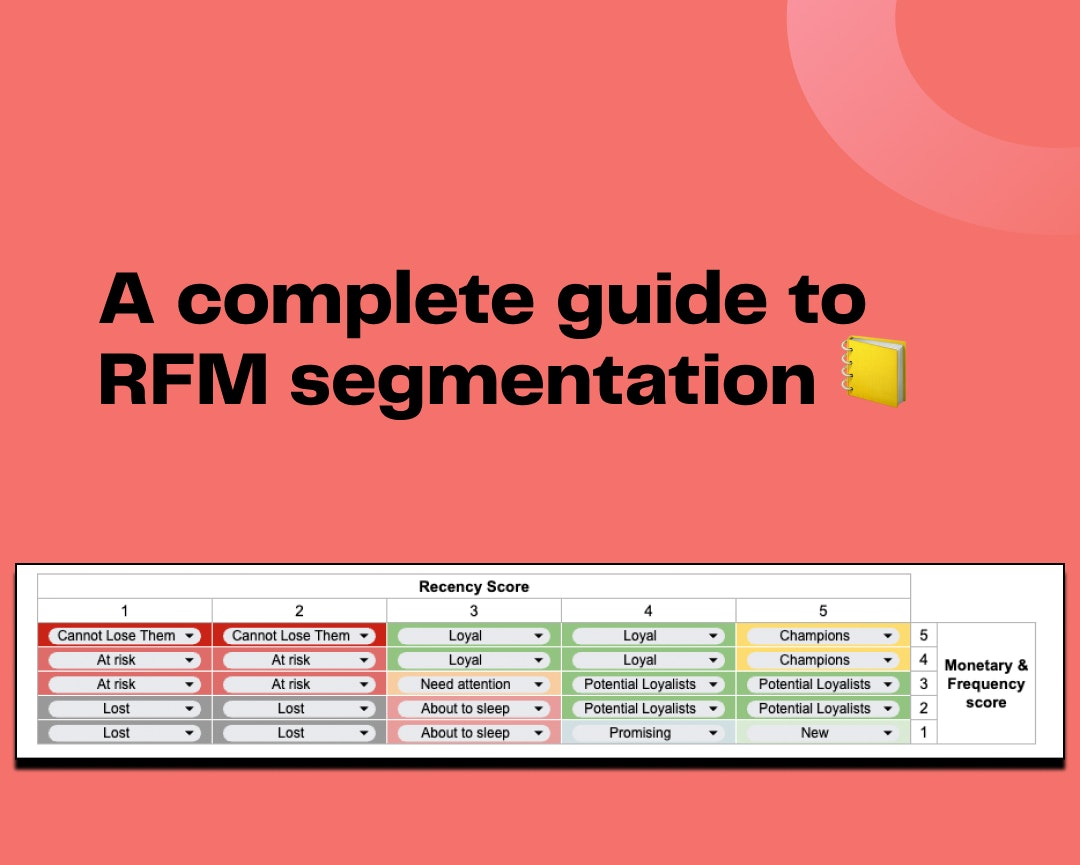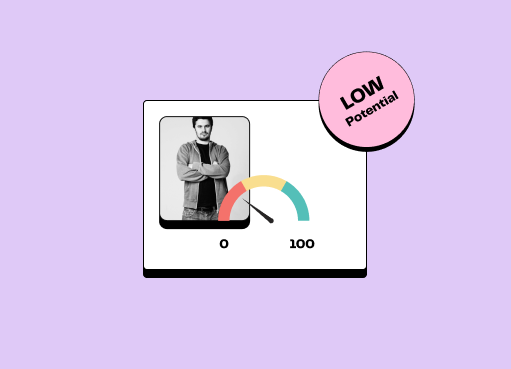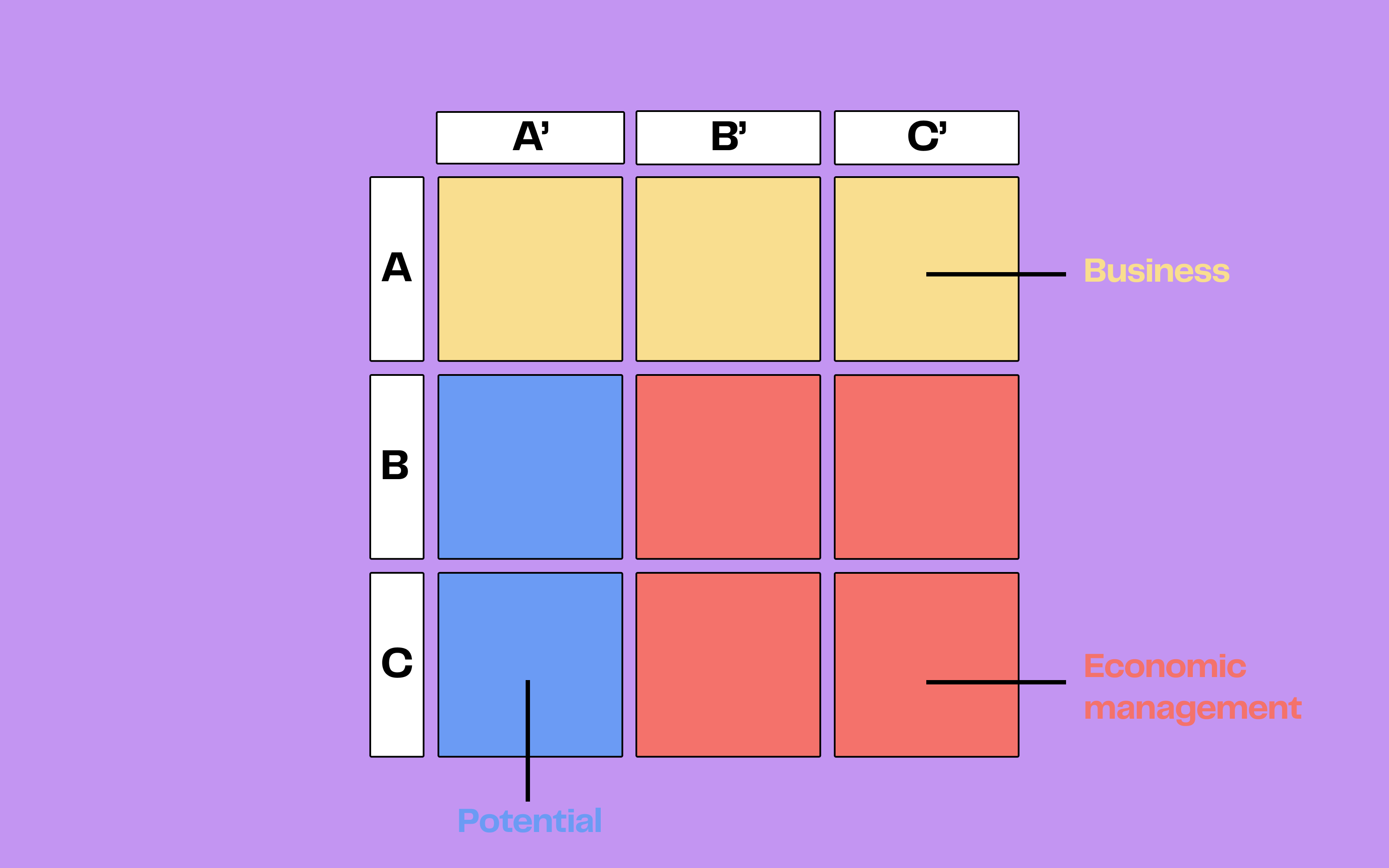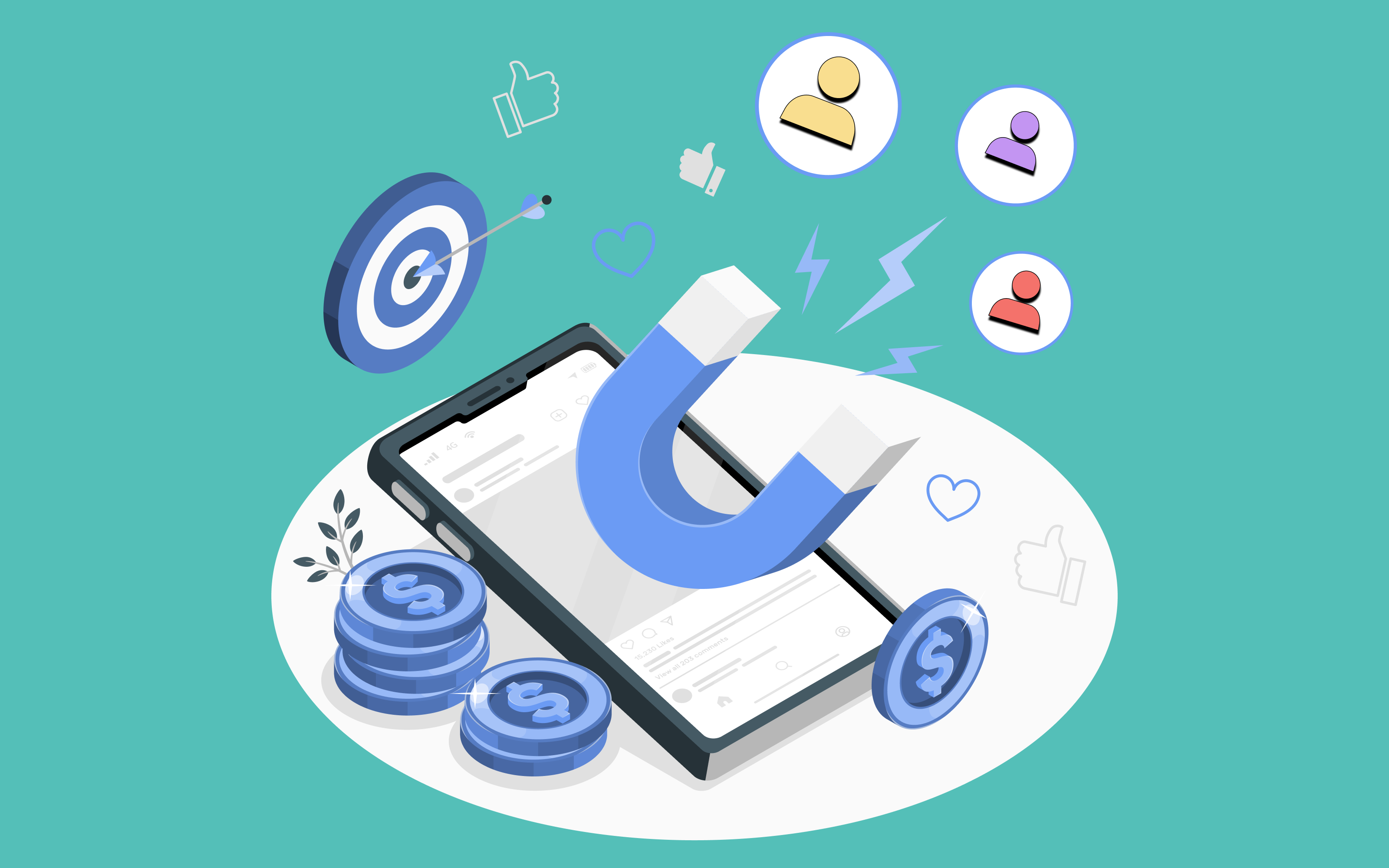
Customer reactivation: definition, purposes, methodology
7min • Last updated on Aug 28, 2025

Alexandra Augusti
Chief of Staff
You might be wondering why some customers, after initially showing great interest in your offers, suddenly take a step back. This phenomenon is more common than it seems and often causes frustration for businesses eager to consolidate and expand their loyal customer base.
Inactive customers – also known as a dormant or passive customers – are a customer segment thathas stopped purchasing your products or services for an extended period. However, they may still passively engage with your brand by reading your newsletters or visiting your social media platforms.
Customer reactivation campaigns are essential strategies for reigniting their interest and motivating a new purchase.
In this guide, we'll explore the reasons behind this inactivity, strategies for accurately identifying dormant customers, and most importantly, how to effectively orchestrate a reactivation campaign using emails, SMS, and other marketing automation techniques.
Why is it crucial to reactivate an inactive customer?
In today’s business environment, where building and maintaining strong relationships with customers is more critical than ever, reactivating an inactive customer is a vital strategic move.
Beyond the financial aspect, there are additional benefits to quickly identifying and addressing inactive customers.
Let’s dive into the reasons why customer reactivation is so crucial for your business 👇
Maximizing revenue
The primary reason for reaching out to an inactive customer is the potential to generate additional revenue by rekindling their interest in your offers. It’s well-known that acquiring a new customer is generally more expensive than retaining and reactivating those already in your base.
In fact, it’s estimated that it is on average five times more costly to attract a new customer than to bring back a passive one.
By reactivating dormant customers, you give yourself the opportunity to significantly boost your revenue.
Cleaning your customer database
Identifying inactive customers, as well as those no longer interested in your brand, is an effective way to clean your customer database. This action removes obsolete contacts, thus optimizing the success rate of your email campaigns. Indeed, if your database is not qualified and your deliverability rate drops, you risk damaging your domain's reputation, and eventually, your emails may not even reach inboxes.
Strengthening your brand image
By choosing to reactivate inactive customers, you demonstrate a continued interest in them, even if they’re not currently engaged with your offers. This approach shows your willingness to value each customer and to invest in winning them back.
This strategy helps build trust and loyalty among your customers, which are essential for long-term marketing success.
However, beware! If your reactivation efforts don’t win back a customer, stop communicating with them to protect your brand image. Bombarding them with promotional emails could irritate your target audience to the point where they become detractors of your brand.
How to identify inactive customers?
Identifying inactive contacts requires combining time-based criteria and signs of inactivity, while also considering the specifics of your industry and business model.
Dormant customers
The first criterion to consider is the elapsed time since the customer’s last significant interaction with your company. This time frame varies greatly depending on your industry and business model. For example, in the consumer goods sector, a customer absent for six months might be considered inactive, while in the automotive industry, this period could extend to several years.
In addition to time, it's crucial to consider the different signs of inactivity. An inactive customer can be identified by their lack of purchases but also by the absence of visits to your website, participation in events, or lack of engagement with your emails and marketing campaigns.
Dormant prospects
It’s important to note that prospects can also be dormant! Consider those who, while not having made a purchase, have created an account or subscribed to your newsletter but have never interacted with your communications. These prospects represent inactive potential customers and require a specific reactivation strategy.
How to reactivate an inactive customer?
In today’s digital landscape, orchestrating an effective customer reactivation campaign is key to catching the attention of your audience.
👇 Follow this step-by-step guide to implement a successfully reactivation strategy
1. Centralizing customer data
The first step to reactivating inactive customers is to gather all your customer data in one place. This includes online browsing data, data from your physical stores, and information collected through your email campaigns and other interactions. Having a holistic view of your customers allows you to accurately analyze their habits and preferences, and thus identify changes.

Customer 360, centralising all customer data
💡 Be sure to keep this database up-to-date and conduct periodic clean-ups to remove any obsolete contacts.
2. Segmenting dormant customers
It’s essential to identify your inactive customers based on various criteria, such as the time since their last interaction, the type of products or services they’ve previously purchased, and their level of engagement. This enables you to build different segments of inactive customers.
Additionally, don’t hesitate to sub-segment this audience if different inactive customers have varying interests, habits, etc. This fine-tuned segmentation facilitates the personalization of reactivation campaigns, maximizing their impact.
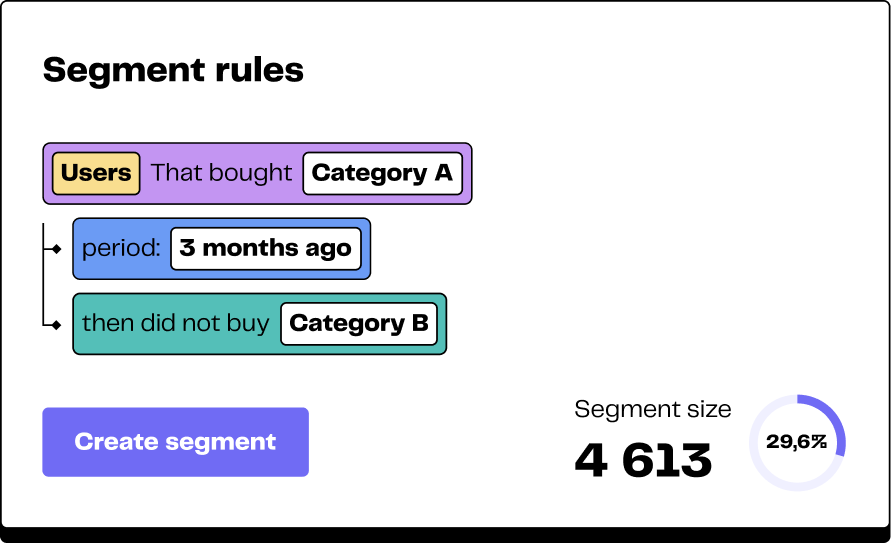
3. Retargeting inactive customers and email campaigns
Once you’ve defined and segmented your inactive customers, send this information to your advertising platforms and marketing automation tools. These tools are essential for personalizing and optimizing your customer reactivation campaigns in a multi-touch approach.
4. Multi-channel reactivation journey
Design reactivation scenarios that incorporate a variety of communication channels, including emails, SMS, and retargeting via social media. For example, consider a series of personalized follow-up emails, complemented by social media campaigns to reinforce your message and encourage action. Each interaction should be designed to provide a specific added value, tailored to the unique needs of each customer.
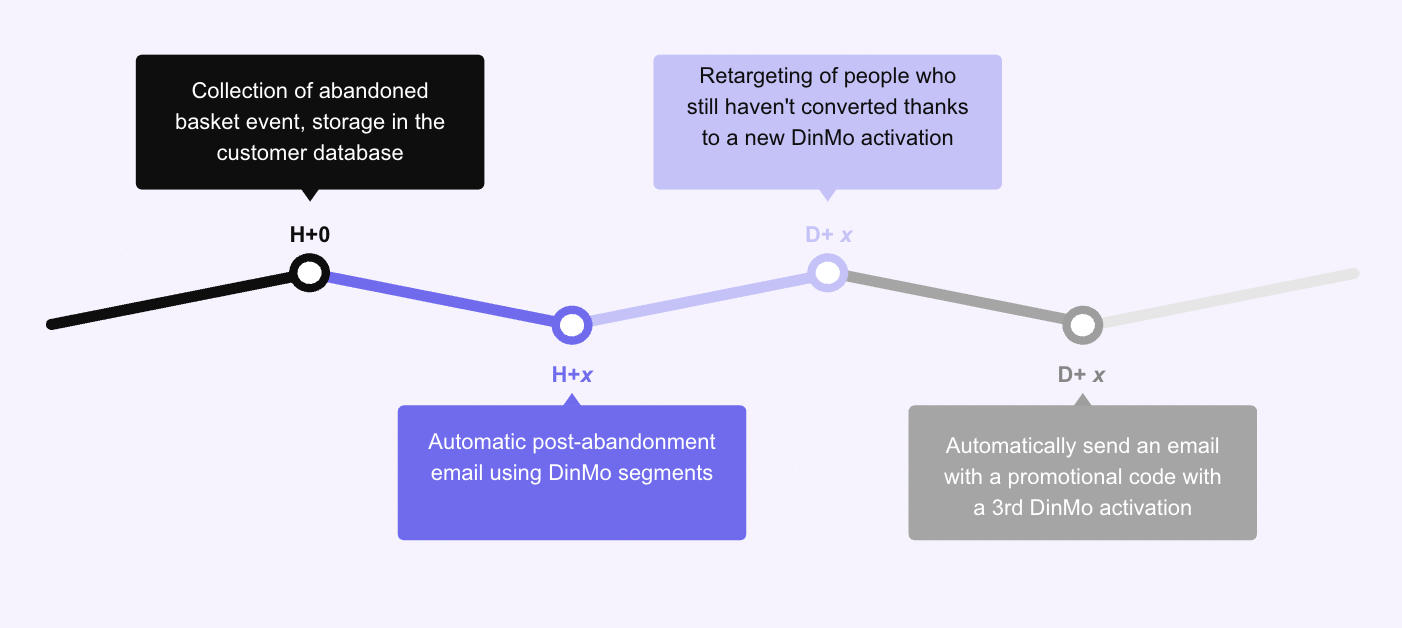
Illustration - Multicanal reactivation after cart abandonment
These steps will guide you in implementing a customer reactivation campaign that is both strategic and effective, rekindling the interest of your inactive customers and encouraging their return.
⚠️ Be cautious in orchestrating your reactivation campaign to avoid over-soliciting your target. The goal is not to overwhelm them with messages, which could cause frustration with your brand, but rather to gently remind them of your presence.
In general, a single touch won’t be enough to reactivate someone who has already lost interest in your offer. However, you must also accept that some customers are permanently lost and stop wasting marketing budget on them.
What tools can you use to deploy your campaign effectively?
In the quest for a successful customer reactivation campaign, it’s essential to equip yourself with the right tools to centralize data, segment your audience effectively, and automate actions.
Let’s discover the essential tools for this. 👇
Centralizing data: the data warehouse
A marketing data warehouse plays a central role by acting as a unified database. It allows you to compile and structure data from various sources such as your websites, physical stores, email communications, and other direct customer interactions. Using a data warehouse is crucial for obtaining a 360° view of your customers, thus making it easier to maintain and update your database. This results in a significant improvement in data quality, a key element for the relevance and effectiveness of your reactivation campaigns.
Data segmentation and activation: the Customer Data Platform (CDP) or Reverse ETL
A Customer Data Platform (CDP) is a strategic tool for collecting, unifying, and analyzing customer data from multiple channels. The CDP allows you to segment your customers based on defined criteria – such as purchase history, preferences, or engagement level – to personalize your reactivation campaigns and maximize their impact.
Reverse ETL, on the other hand, is a mechanism that reintroduces unified data from a data warehouse into your marketing, sales, and customer support tools. This process enables targeted and personalized activation of your data, ensuring the rapid and effective implementation of your reactivation strategies.
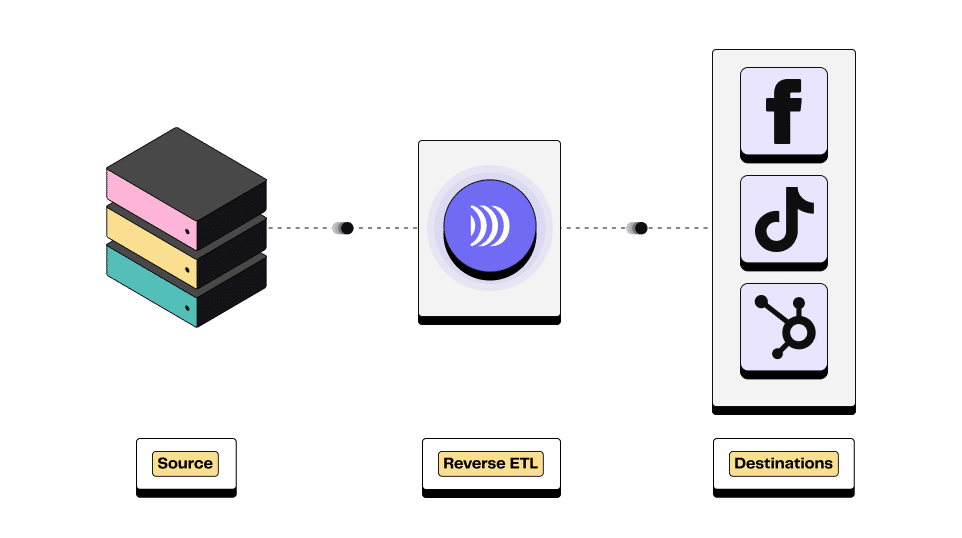
Illustration of Reverse ETL process
🌟 Some Reverse ETL tools, like DinMo, also offer a no-code segment builder, allowing marketing teams to operate autonomously with this tool, which is typically intended for data teams.
Proactive tactics to keep customers engaged
Staying ahead in the battle against customer inactivity requires more than just tracking; it necessitates a methodical strategy to maintain an engaged customer base.
Predictive customer scoring against inactivity
Having a sufficient amount of customer data allows the application of a predictive customer scoring methodology to anticipate potential inactivity. This process considers various factors such as purchase frequency, engagement level with your communications, and interaction history. With these scores, you can identify customers likely to become inactive and deploy targeted reengagement strategies before they fully disengage.
Personalized reengagement strategies
These reengagement strategies must be carefully crafted based on predictive scoring or the inactive audience profile. The type of email to send will vary, while keeping the goal of reactivating the customer in mind. One example might be to initiate contact with a non-promotional email and then intensify the offer if the customer doesn’t respond. This proactive tactic aims to keep the customer engaged and prevent inactivity.
Personalization and improving customer satisfaction
The key to avoiding inactivity lies in the personalization of communications and the continuous improvement of customer satisfaction. It’s essential that your messages are tailored to meet the individual preferences and specific behaviors of each customer. Investing in customer satisfaction through quality service, rewards, and exclusive benefits can significantly increase loyalty and reduce the risk of inactivity.
By adopting these preventive measures, you’ll increase your chances of reducing the risk of inactivity within your customer base, ensuring a strong and engaged foundation.
In conclusion
In a competitive environment where every purchase counts, reengaging inactive customers is crucial not only to maintaining but also strengthening your relationships with your clientele. The importance of gathering your customer information, segmenting your audience, and launching personalized reactivation campaigns cannot be overstated.
🌟 DinMo positions itself as your go-to partner in this mission, offering you the tools to access your data, enrich it with predictive attributes, segment your customers effectively, and integrate this information into your marketing strategies for optimal results.
🕵️ To explore how DinMo can transform your approach and help you reach new heights, we invite you to request a free demo!


















